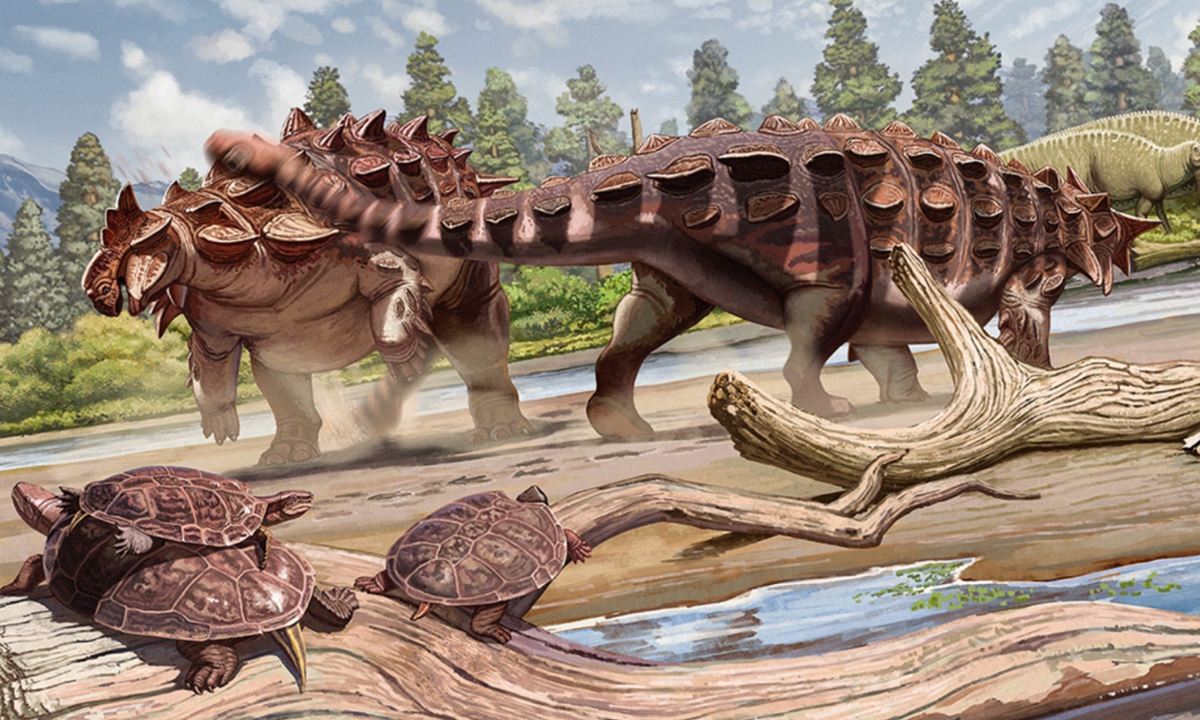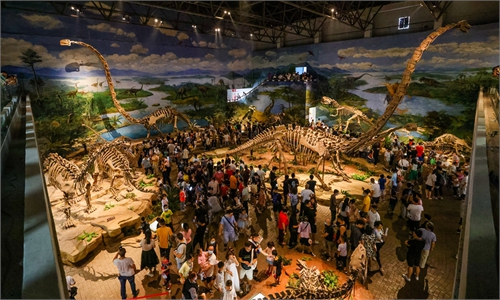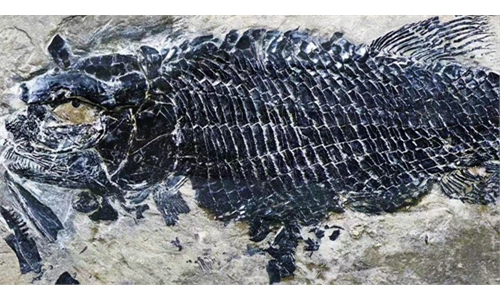ARTS / CULTURE & LEISURE
China’s largest ankylosaur fossil identified as new species of dinosaur

Photo: Ye Jianhao
A Late Cretaceous ankylosaur specimen found in Guangchang county in Fuzhou, East China's Jiangxi Province, nearly four decades ago has recently been identified as a new species of dinosaur.
"This is currently the largest new species of ankylosaur identified. I named it 'Huaxiazhoulong shouwen,'" Zhu Ziheng, a researcher at the Center for Vertebrate Evolutionary Biology, Yunnan University, told the Global Times.
"The genus name Huaxia symbolizes its recognition as 'China's best' when it was first discovered, while 'zhou' refers to its cranial armor. The species name shouwen is a shorthand reference to a bronze helmet adorned with beast patterns, a treasure of the Jiangxi Provincial Museum," Zhu noted.
In May 1986, villagers in a Guangchang county village discovered an ankylosaur fossil while farming. Local authorities promptly conducted a rescue excavation. Due to the fossil's enormous size and remarkably complete preservation, it was hailed at the time as "China's best - the Guangchang ankylosaur."
Zhu recalled that the fossil had suffered from weathering and fragmentation, with individual ribs breaking into seven or eight pieces. It was sent to the Shanghai Natural History Museum for restoration, and a replica was later provided for display.
Following discussions, the Jiangxi Provincial Museum transferred the original fossil to its repository.
In 2023, the museum collaborated with Zhu's research team to initiate a detailed study.
To mitigate the risk of secondary damage during analysis, the researchers employed a handheld laser scanner to collect 3D data on the fossil. "Large dinosaur fossils are fragile and require examination from multiple angles, making transportation risky. The use of scanning eliminates this concern," Zhu explained.
He noted that it is a challenge to stabilize large bones like scapulae to take photos and the fossils are susceptible to damage, but 3D scanning allows for detailed examination without such constraints. Surface coloration can obscure some features of fossils, whereas the scanned models disregard color differences, facilitating easier analysis.
"Based on the characteristics of its vertebrae and limb bones, we determined that Huaxiazhoulong exceeded six meters in length, making it the largest ankylosaur discovered in China to date," Zhu said.
Aside from its size, Huaxiazhoulong exhibits unique features. Its scapula possesses a robust medial ridge, a trait uncommon among ankylosaurs, which likely enhanced shoulder strength for better body support or digging. Furthermore, its ischium bears distinctive protrusions at the midshaft and distal end, an unprecedented structure in ankylosaurs, potentially allowing for additional muscle attachment.
Phylogenetic analysis identifies Huaxiazhoulong as a basal member of the Ankylosauridae family, retaining many primitive features absent in more derived ankylosaurs. These include nodosauridae-like heart-shaped anterior caudal vertebrae, U-shaped tail club processes a prominent medial ridge on the scapula, and an unfused tibia and astragalus.
Huaxiazhoulong is the second officially named ankylosaur species from Jiangxi, following Datai, which lived earlier (approximately 113-100 million years ago) and occupied a different evolutionary position. This discovery enriches human knowledge of the diversity of ankylosaurs in the Late Cretaceous Jiangxi.



